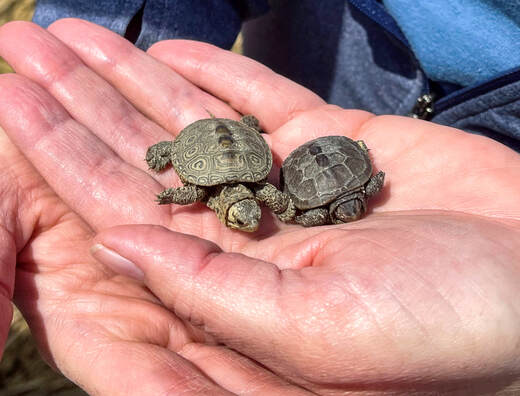|
House left in water after Hurricane Sandy Hey everyone! My second week sure was busy. To kick things off, I went on my first solo adventure to take photos of a future restoration site in Bay Point. I drove over there with my phone, a Google Maps print-out, and checklist from Shane. As I approached the set location, I drove past one house- the only one left in the area. I continued further down the road around the bend, getting closer to the shoreline. I found a single house left in the water, which I later found out was effected by Hurricane Sandy. It was a super windy day, with the waves crashing beside me. I got to a point where I could no longer drive the truck, because of rocks and piles of phragmites that had blown in from the recent Nor’easter. Taking the rest of my trip on foot, I walked about a mile, stopping to take photos from north, east, south, and west vantage points.  Concrete dam restoration site from a distance Concrete dam restoration site from a distance I found the concrete dam I was instructed to look for, but with the wind and noticing the drop off, I didn’t continue walking. In the future, I’ll walk further when I visit again. I finished taking the photos I needed, and made my walk back to the truck, noticing all of the leftover rubble lining the shore. This rubble is left over from ill-fated attempts to stabilize the shore, but now only serve to trap horseshoe crabs. As I started heading back, I ran into the owner of the only house that exists on the road. I introduced myself and had a nice conversation with him. When I got back to the office, I uploaded my photos into Publisher and familiarized myself with the program. The rest of my weekdays were spent preparing for our Earth Day dune grass planting event. We had 5,000 culms of beach grass to work with, and the day prior we loaded every single bunch in the bed of our truck to place on the beach in Pierces Point, Cape May County. On the day of, we loaded our truck with supplies from beach carts to gloves and set off. When we got there, we setup our tent and table to greet our volunteers. We were ready to plant! As volunteers arrived, it was my job to teach them how to plant the dune grass and explain its ecological importance. When everyone got the hang of it and settled into their own spots, I grabbed as many culms as I could and started planting as well. This beach grass will help stabilize the beach berms with their extensive root systems and hopefully catch some wind-blown sand to further build up the berms. Last year, the Society improved the beach berm to keep horseshoe crabs from washing back into the marsh during high tide and an untimely demise.  Two newly hatched northern diamondback terrapins (Malaclemys terrapin) Two newly hatched northern diamondback terrapins (Malaclemys terrapin) It was a gorgeous sunny day which made the work even more enjoyable. We also came across two northern diamondback terrapin hatchlings and a horseshoe crab! It was a productive and fun day with 20+ volunteers and we planted just about all the dune grass! It was a great first event on my end. Although it was Friday, my work week wasn’t done yet. That Saturday, Shane and I went up to the Slade Dale Sanctuary in Point Pleasant to meet up with Capt. Al, Julie, Zack, Manny, and some great volunteers. We were there to work on the branch box breakwaters that were installed by the Society to slow the marsh erosion at the sanctuary and hopefully restore some of the marsh edge. We stacked Christmas trees (great for capturing sediment) onto our jon boats and waded through thick, waist-high mud to the branch box pilings to stuff them with the trees. We definitely got our cardio in that day! It was a tiring, but great way to close out my 2nd week at the Society. Loading Christmas trees on to our jon boat to ferry them out to the pilings
Comments are closed.
|
Archives
July 2024
Categories
All
|



